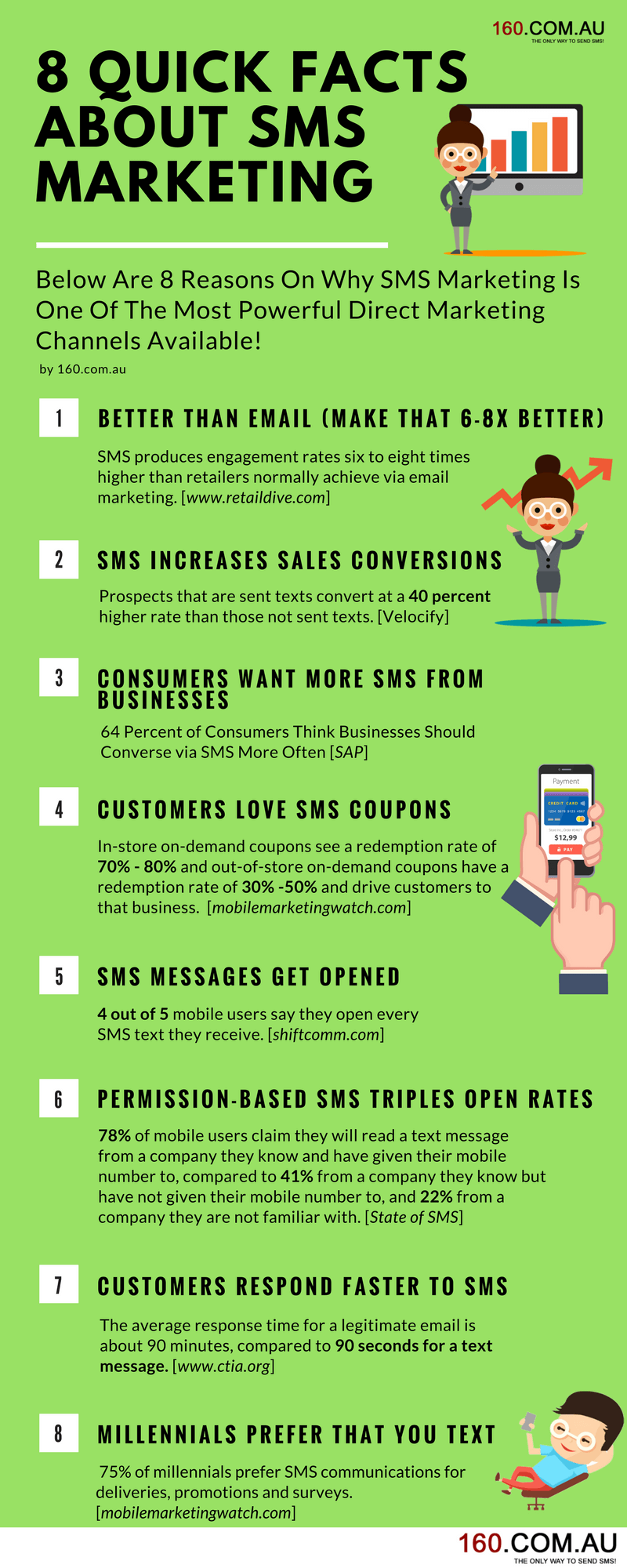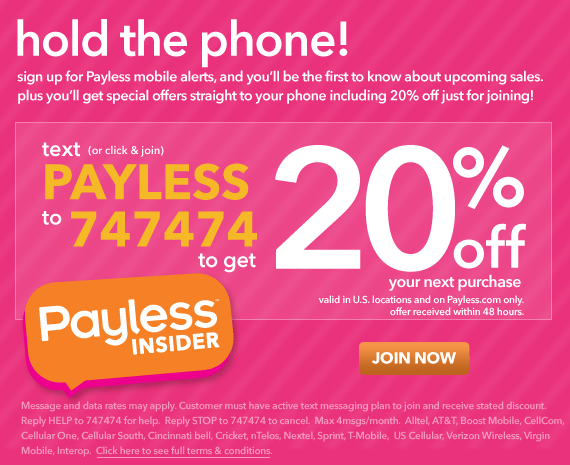In this SMS Marketing Guide, you learn about why SMS marketing (also referred to as text message marketing) has been slowly picking up steam in recent years, largely due to the way in which it works.
It’s a direct marketing channel that allows you to reach anyone with a mobile phone (smart phone or feature phone).
Few, if any other marketing channels come close to the power of text messaging when it comes to getting the attention of your prospect and having them respond or take a desired action.
In this beginners guide you’ll learn:
- Quick Facts About SMS Marketing
- What Is SMS Marketing?
- What Makes SMS Marketing Different?
- SMS Marketing Benefits
- What Is Permission-Based Marketing? (and why is it important?)
- What are the downsides to text marketing?
- SMS features you should be familiar with
- SMS Marketing Fundamentals
- List Building Basics (how to collect mobile numbers for sms marketing)
- Where Do I Start?
- The Money Is In The List! – How To Start Building Lists With SMS
- 9 Offer Types To Get People To Join Your List
- How To Launch An Effective SMS Campaign
- A Few Quick Tips
- Sending Your SMS Campaign
- Measuring The Performance Of Your Campaigns
- Summary
Quick Facts About SMS

What Is SMS Marketing?
SMS Marketing is a way for businesses and organisations to reach subscribers via their mobile phone message inbox to keep them updated on news or events or to send special offers, coupons, invites and new products.
Businesses love SMS because there is virtually no learning curve in terms of using the technology the only difference is that you’ll send an SMS from computer as opposed to sending it from your mobile.
While the technical side of SMS marketing is fairly straightforward the marketing side requires a little more thought and is the goal of this guide, by reading this guide you’ll understand the why SMS is different from all other marketing, the fundamentals of SMS and the features you will be using.
What Makes SMS Marketing Different?
 Imagine an advertising channel where:
Imagine an advertising channel where:
- Customers actually wanted you to send them offers – did you know 75 percent of consumers would like to have special offers sent to them via texting?
- When it comes to SMS virtually every message you send gets read.
- Customers not only open your marketing but respond to it within a few minutes. On average, it takes a person 90 minutes to respond to an email, but it only takes 90 seconds for them to respond to a text message.
- No ad blockers, SPAM filters or algorithm updates that could slap you into oblivion to concern yourself with.
In addition, SMS is not reliant on the rules of the web for example you don’t need to worry about Google algorithm updates, ad blockers or wasting valuable time on ad creatives.
It’s beautifully simple.
SMS is a completely separate channel which is also why it is one of the most powerful.
SMS Marketing Benefits
SMS marketing provides an almost endless list of benefits and is becoming an increasingly valuable part of any marketing strategy especially as younger generations (who prefer SMS and social media messaging to phone calls) come into the picture.
- Increase foot traffic to your business
- SMS is permission-based, an incredibly important marketing advantage.
- Increase brand and top-of-mind positioning inside the minds of your customers
- Create a profitable SMS list which provides a reliable revenue stream
- Create brand loyalists due to value-added communications
- Generate bookings and revenue within minutes of sending out an SMS campaign
- Integrate seamlessly into your existing technology
- There’s less competition inside a mobile inbox compared to say your email inbox
- SMS is an instant direct marketing channel that has fast response rates
- All mobile phones are text-capable you can reach consumers on feature phones (non-smart phones that have the most basic functions)
What Is Permission-Based Marketing?
Permission-based marketing simply means that someone has given you explicit permission to communicate with them.
The benefits to permission based marketing are long but the point is, that it makes your job easier whether that be to generate leads, convert more sales or get buy-in on a particular idea.
The flip-side of this coin is what we call “interruption-based” marketing and means that not only do you not have the right to communicate with consumers but they often times don’t want to hear from you.
Because of this, interruption-based marketing suffers from:
- High rejection rates – think of telemarketers and cold callers
- Low conversion rates – because your marketing has to start from a “cold” position the chances of conversion drop dramatically.
- Advertising blindness (your ad not only gets consciously ignored but there are areas inside the brain that will pull your ad away from a person’s consciousness so that they don’t even see it – like a blind spot.
- High advertising costs – to combat advertising blindness businesses have to run ads dozens of times, there’s saying in marketing: “someone has to see your ad 7 times before it gets noticed” (it’s even more now) well, with SMS you get noticed on the first go.
Interruption style marketing when done right can be incredibly effective but for most it’s a tough, dirty game to play.
How can you turn interruption based marketing around?
Most interruption based marketing (PPC ads for example) fail because it is pushing for the “sale” immediately – just like cold calling it suffers from high rejection because the risk is higher for the potential customer.
Smart marketers find ways to lower the risk and will instead create a PPC ad that offers a piece of relevant, valuable content and then onto a lead capture system i.e. your SMS marketing list which moves you closer to getting the desired outcome – it’s a longer process but the ROI is much higher.
The difference between interruption and permission messaging is night and day.
What Are The Downsides To SMS Marketing?
The two main downsides to Text Message Marketing are:
- Frequency and;
- Reach
Frequency
Frequency is that number of times a person see’s your text message.
Due to the personal nature of mobile it’s tough to contact your subscribers as often as other channels e.g. social media, email marketing because mobile has an incredibly low tolerance for SPAM messaging and can quickly increase your unsubscribe rates.
That said there will be times where you will be able to push the boundaries and increase your frequency rate for example, if you have customers that are responding well to your SMS’s and buying frequently then it may make sense to follow that upward momentum – but be careful.
It’s tempting to hit up your list every time you have a new product, a special offer, new event etc. but you want to make sure that you’re perceived as great copywriting legend Dan Kennedy would say: “a welcomed guest rather than an annoying pest.”
Message customers when you have something great to offer them an you’ll be fine.
Reach (at least in the beginning)
The other downside to SMS marketing is that your reach is limited by the amount of people on your list.
If you only have 100 people on your mobile marketing list then, your reach is only 100.
The upside to this problem of reach is that the people on your contact list are highly responsive, you’ll find the ROI to be a lot higher and as you begin to grow that list through consistent promotion you’ll be building an incredibly profitable business asset.
What about the 160 character limit?
Some SMS marketers will say that the 160 character limited is a downside but I disagree, it forces advertisers to create short compelling messaging – the problem with email is that there are no character limits so you can fall into the trap of thinking that the reader has the time and attention span to read every word – not true – customers need you to get to the point quickly.
This focus on tight messaging pays off greatly in other areas of the selling and marketing your solutions as well.
SMS Features That You Should Be Familiar With
Bulk SMS allows you to send out a large number of SMS messages instantly which will be received by the recipients within minutes.
Keyword Opt-in
List building is the engine room for SMS marketing – often referred to as “contact lists” this allows you to not only build profitable subscriber lists but also segment them into meaningful groups. We’ll take a closer look at this shortly.
2-Way Messaging
2-Way messaging allows you to create a conversation with your contacts; our clients will use these for customer service feedback, polls, a confirmation etc.
Email To SMS
Email to SMS allows you to send SMS from any email platform whether it’s inside a CRM, cloud-based like Gmail or software based like Microsoft Outlook. Used with 2-Way messaging you can send and receive SMS through email.
SMS Integration
SMS integration (SMS API) simply means adding SMS capabilities to your existing software. For example, if you use a CRM then by using our API you can now send SMS from your CRM platform.
Concatenated SMS Messages
This allows you to send long SMS messages beyond 160 characters up to 450 in one message. This means that the recipient will receive one long message instead of 3 separate 160 character messages.
Keep in mind that this will use 3 credits instead of one (one credit = 1 x 160 character message)
2FA – Two-Factor Authentication
Two-Factor Authentication is mostly used by companies where security is a major area of importance like banks, companies with large customer databases etc.
2FA requires that a person enter their mobile number into a website, they are then sent a special one-time code, and they then enter that code into the website.
You’ve most likely gone through this process when sending money overseas through your online banking account.
Opt-Out
When people on your list have no need for what you offer or no longer wish to receive messages from you they can easily opt-out. Always have an opt-out option on every message for two main reasons:
- SMS SPAM laws
- Reduce costs: keep your lists lean with buyers this reduces costs and improves overall ROI.
Contact Groups
This can be one or multiple groups. It is highly advised that you create separate contact groups if you serve a market with different needs. If you sell different products then it may not be a good idea to send a bulk SMS out to the whole group instead you’d want to send a specific product offer to the group that is most likely to response and purchase.
Name Merging
By entering in a special short code like #name# our SMS system will insert the person’s name into the text message. This can only happen if you have the person’s name on the contact list.
Automated SMS
Automation is a great feature because it allows you to set up campaigns or reminders in advance and then let the system take care of the rest.
You can schedule by specific time, day of the week and date.
Customised Sender ID
This feature allows you to send text messages using your brand name instead of a mobile number.
SPAM Compliance
Never start an SMS campaign unless you’re clear around what you can and can’t do, here’s a reference guide.
SMS Template
Not a necessity however it does at least two things:
- Speeds up messaging
- Helps you create a collection of proven successful templates.
SMS Marketing Fundamentals
The success of SMS relies on your subscriber list.
The better your list is, the more results you can generate from it.
What does “better” mean exactly?
By this I mean that you have clean, segmented lists filled with targeted leads and customers.
What do I mean by “clean”?
Every time you send out an SMS campaign it costs money and the larger your lists grow the higher the spend and also the higher the amount of non-buyers.
To keep your costs lean it’s important to have a clear “opt-out” function so that people can easily remove themselves from your list if they no longer wish to receive messages from you.
Segmentation (contact group lists)
Segmentation is the key to blockbuster SMS campaigns.
The worst mistake you can make with SMS is placing all of your contacts inside one giant list.
There are two reasons for this:
1. It’s expensive. People join your list for different reasons and because of this they’re only interested in specific offers and updates. Sending out an offer to people who would never convert into a sale is a waste of money.
2. Sending irrelevant offers to people is considered spam and will likely increase your unsubscribe rate.
Instead you want to have multiple contact group lists which target specific interests, demographics, solution goals etc.
The reason for this is that when you create a targeted offer you’ll be able to send it to a group of people who are pre-interested, pre-motivated and predisposed to accepting that offer.
For example:
A fitness club has members who are interested in vastly different things so they may put together the following contact groups:
- Crossfit
- Body Building
- Runners
- Powerlifting
- Yoga
- Circuit
- Dance
- Leads for sales team
You can see how having all of these groups jammed into one giant list would be a problem right?
Sending an offer about cross-fit training would not do well if we sent it out to the entire list it would to unsubscribe city!
List segmentation is essential for improving conversion rates.
List Building Basics (How to collect mobile numbers for SMS marketing)
In order to start building lists you need:
- Keyword
- Shortcode
- Contact group
What is a keyword?
A keyword is a short word that people will reply back to you with and will automatically add that person to a segmented contact group.
What is a shortcode?
A shortcode is simply a short phone number that people will text that keyword back to.
What is a contact group?
A contact group is the specific contact group that you wish to add new subscribers i.e. the people who texted the keyword back to you.
Text “crossfitwraps” to 12345 to get your free wrist wraps.
Anyone who is interested in crossfit will be added to the crossfit contact group.
How To Start Building Lists With SMS
 Building a list in the SMS world is incredibly easy and straightforward.
Building a list in the SMS world is incredibly easy and straightforward.
The first step is to create a contact group to place our subscribers into.
All you need to do is create a contact group and give it a name that will help you easily identify that group.
Step 1: Create Your Offer
The strength of your offer will largely determine the amount of new leads or customers you will receive.
Don’t be timid with your offer, make it irresistible!
The job of the offer is not necessarily to make a profit on day one but to help you collect as many mobile numbers as you can so that you can sell to those people for months for even years ahead.
In terms of constructing an offer it can be anything as long as the people that you’re targeting will find it difficult to not give you their mobile number.
However I’ve outlined 9 offer structures to give you a jump start:
1. Time Sensitive Offers
It is said that one of the greatest inventions man came up with was the deadline – I agree. Deadlines are great for getting people to take action and should be included into most of your offers – if not a time sensitive offer then a quantitty-based offer i.e. “limited stock”.
All items in store are 25% off until midnight tonight.
2. Price Offers
Reduced price offers are another popular choice – this is good if you have a good upsell process in place.
Take 10% off when you use this coupon code at checkout.
3. Product Offers
Target a specific product or range.
Take 20% off our menswear with this coupon code.
4. Bundle Offers
Instead of selling a pair of pants offer a complete suite. Be sure to mention the savings if bought separately.
Men’s business suites 20% off with this coupon code.
5. Geo-Based Offers
Target offers aimed at people in specific locations. If you’re selling higher end range of product then you may target subscribers who live in more affluent neighbourhoods first.
Use this coupon code to take 15% off your purchase at our Springfield branch.
6. Pre-Sell Offers
Sometimes you want to test new products, but before you can directly “sell” to them you have to warm them up first with some content. If you’re a retail store but you’re looking at hiring stylists that can put your whole wardrobe together then you may try something like:
Learn how to buy a complete new wardrobe for only $150 see this exclusive training.
7. Free Gift Offer
Use this to incentivize purchases.
Buy X and get Y Free valued at $99.
8. Referral Offer
Great for growing your subscriber list.
Refer a friend and get 50% off.
9. Piggy Back Offer
Use this only with businesses that you know have a golden reputation and that your list will actually appreciate. You always want to be a like an over-protective brother with your SMS marketing list.
Buy X and get 50% Off at company Y
Step 2: Create your contacts list
Once you have your contact group group created it’s now time think of the keyword that you wish to use and the short-code you want to assign it to, for example:
Text “gimme50” to 12345 to get 50% off your main course.
‘gimme50’ is the keyword and ‘12345’ is the short-code.
Now that you’ve got your keyword and short-code you assign it to your contact list.
Everything is set!
When someone keys in the keyword and sends it to the short-code they are then placed into the new contact group you created.
Now you can follow up with this person whenever you like.
 Step 3: Promote: Where will you distribute this keyword opt-in offer
Step 3: Promote: Where will you distribute this keyword opt-in offer
This step is important as you want to drive as many people into your list as possible which means getting as many eyes on your offer as you can.
Add this to your current marketing activities and channels:
- Social media
- Website
- Point of purchase
- Sandwich board
- Pamphlets
You want to drive this promotion as hard as you can so you can get as many leads or customers onto your list.
Once you have the names on your list you will now be able to drive sales from them long after this promotion has ended.
NOTE: If you’re driving them to a landing page then make sure you have it built and tested for mobile use.
Make sure that your landing page is lightning fast, studies show that for every second a web page loads your conversions drop by 7%.
Slow page loading times in the mobile world are a killer.
 How To Launch An Effective SMS Campaign
How To Launch An Effective SMS Campaign
Now that you’re starting to build your list you’ll want to plan your first Online SMS campaign.
At this stage it’ll be quite simple since you only have one list but over time you’ll have many lists so it’s important to keep your messaging tight in terms of relevancy.
To give your campaign the highest chance of success you want to make sure that you’re sending the…
…Right offer to the right person.
Nothing will increase your unsubscribes faster than sending offers or information to people who have no interest in it.
Segmentation will help you in this area.
You can create contact list segments around things like:
- Buying history
- Opt-in offer
- Location
- Gender etc.
Segmentation helps you plan your campaigns more effectively.
A Few Quick Tips
Here are a few quick tips to keep in mind when launching a text campaign. We go deeper into this topic on our blog post 16 tips to set your SMS marketing on fire in 2018 but I’ll go over a few of them here.
1. Set The Rules Of Engagement
How do you want the relationship to work?
When someone joins your list, send them an SMS that outlines what they can expect from you, it could be things like:
How often you’ll be communicating with them
What kinds of messages you will be sending (offers, updates etc)
letting them know how often you will be communicating with them and/or what to expect from you.
You don’t have to try and fit this into a single 160 character text, use the concatenated message feature up to 450 characters.
2. Lead with value
Don’t’ be a pest. Only contact them with something valuable so they’re always looking out for your SMS’s. This is where group segmentation comes in handy – by sending only relevant information or offers to specific groups of people your messages will always be welcomed.
3. Personalize
It’s not always necessary to include the person’s name, I mean, do you message your friends beginning with their first name?
If you look at your message inbox the messages in there are really just a continuation of an ongoing conversation, right?
Think in the same terms – create an ongoing conversation.
I do recommend that early in the relationship that you use their name but then just assume the relationship.
4. Have A Clear Unsubscribe Option
Never be afraid to end the relationship, keep your list full with only buyers and qualified leads – lose the rest. Always make it easy for non-buyers to exit your list by telling them how they can opt-out for example:
“STOP” to op-out
5. Clear Call To Action
At the conclusion of your message…tell them exactly what you want them to do next.
6. Mobile Friendly Pages
Make sure your landing pages are mobile friendly and load fast (less than 3 seconds).
7. Urgency
Use urgency where necessary, the goal is to get the recipient to take an action so if it makes sense to apply pressure then do so.
8. Track Performance
You need to know what’s working so make sure you’re tracking the performance of each campaign.
9. Segment Your Lists
It’s worth mentioning again how important segmentation is – there is no such thing as a “one size fits all” in marketing, especially with SMS.
Sending Your SMS Campaign
Log in to your SMS portal:
Click on your “contacts”

Select your contact group

Select the recipients you want to send the SMS campaign to and click “put selected contacts as recipients”

Type out your message (or use a template)

Click “Send SMS” or if you want to schedule for later the click on the “please send my SMS another time” and it will open up a calendar for you to schedule your campaign.
Within the next few minutes everyone will receive your SMS message.
Measuring The Performance Of Your Campaigns
 Now that your SMS marketing campaign has been sent it’s important to create good habits, that is, tracking your numbers.
Now that your SMS marketing campaign has been sent it’s important to create good habits, that is, tracking your numbers.
This may not seem exciting but it is essential to growth.
By carefully tracking data, you’ll spot trends that you can use to generate more sales, reduce unsubscribes, grow your opt-ins etc.
Here are 10 metrics that you may want to track:
- List growth rate (subscription rate): How many people are joining your lists daily, weekly, monthly, annually?
- Unsubscribe Rate: How many unsubscribes do you get daily, weekly, monthly, annually? Know what your base line numbers are here so you can see how different campaigns affect those numbers.
- Join/Unsubscribe Ratio: Ratios are a great way to see what is happening at a glance. During the month of January how many people joined X list vs. how many people unsubscribed?
- Attribution: What marketing channels are contributing to your list growth? Also, if possible, uncover which marketing channels are delivering you the best quality opt-ins.
- List Size: Is your list size growing, shrinking or staying the same?
- List value: Knowing what your list is worth to your company is essential, it could be an invaluable asset worth $1,000’s or $10,000’s per year or more.
- Revenue Per Subscriber: Another good metric to be aware of is your revenue per subscriber. If the revenue value of each subscriber is dropping then it could mean you have too many unresponsive subscribers on your list and that you need to do some house cleaning (removing people who are unresponsive to your SMS’s)
- Conversion rate: Always a good metric to know. Of the people who responded to your SMS message how many of them converted into a sale?
- Response rate: How many people are responding to your offers?
- SMS Lifecycle: How long do people stay on your list before unsubscribing? Is it worth finding ways to extend the offer? If you sell baby products, do you then find ‘toddler’ products or services to sell (e.g. affiliate sales for another company who sells to that age group?) and create a list around that?
Summary
When it comes to SMS marketing there are 4 main areas that you need to master:
- List Building: The money is in the list
- Revenue Generation: Send irresistible offers to build lists quickly
- Housekeeping: Keep your list clean from non-buyers to increase ROI
- Metrics: Track your numbers for continuous growth
Want to see more tips on SMS marketing? Read our “16 Pro Tips For SMS Marketing” article.
